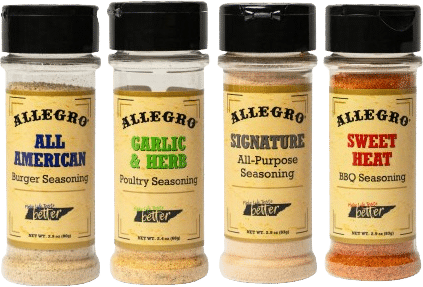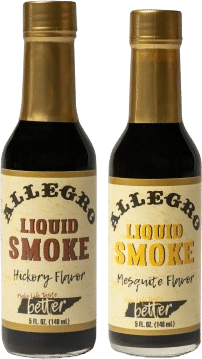The Origins of Teriyaki: Tracing its Roots and Cultural Significance

Teriyaki, with its mouthwatering flavors and succulent glaze, has become a globally beloved dish. Whether served with tender chicken, juicy beef, or fresh seafood, teriyaki’s sweet and savory taste has found its way onto menus and into kitchens worldwide.
Its popularity is one of the many reasons Allegro offers its customers with Allegro’s own tasty Teriyaki Marinade! But have you ever wondered about the origins of this delectable culinary creation? In this blog, we will take a journey back in time to trace the roots of teriyaki and explore its cultural significance in Japanese cuisine and beyond.
For step-by-step tips on cooking with teriyaki marinade, explore our dedicated guide.
The Early Beginnings of Teriyaki
Teriyaki’s story dates back to ancient Japan, where preservation methods were crucial for ensuring food availability during harsh seasons. The word “teriyaki” is a combination of two Japanese terms: “teri” (照り), which means luster or shine, and “yaki” (焼き), meaning grilled or broiled. The cooking method of grilling or broiling with a glaze traces its origins to the Edo period (1603-1868) in Japanese history.
During those times, teriyaki was primarily used for fish, especially in the coastal regions of Japan. The fish would be marinated in a mixture of soy sauce, sake, and sugar before being grilled over an open flame. The marinade not only enhanced the flavor but also acted as a natural preservative, allowing the fish to be stored for extended periods.
Teriyaki’s Evolution: From Fish to Meat
While teriyaki began as a fish-based dish, its popularity quickly spread to other meats, such as chicken, beef, and pork. The transition from fish to meat occurred during the Meiji era (1868-1912) when Japan went through a period of modernization and cultural exchange with the Western world.
Japanese cooks started experimenting with different proteins and adapted the traditional teriyaki marinade to suit various tastes. As a result, the classic teriyaki glaze was born, incorporating soy sauce, mirin (a sweet rice wine), sugar, and sometimes ginger and garlic. While Allegro’s Teriyaki Marinade is inspired by the traditional teriyaki flavor profile, it also incorporates the renowned properties of Allegro’s Original Marinade to form the perfect combination.
Need culinary inspiration? Browse our collection of Teriyaki Marinade recipes that showcase this versatile glaze.
Teriyaki Goes Global
The 20th century witnessed an influx of Japanese immigrants to different parts of the world, including North America. As they settled in their new homes, they brought with them the rich tapestry of Japanese cuisine, including teriyaki. The delicious flavors and simplicity of the dish appealed to diverse palates, and it wasn’t long before teriyaki gained popularity beyond Japan’s borders.
In the United States, teriyaki became especially popular in Hawaii, where Japanese immigrants introduced the local population to this delightful culinary creation. Over time, teriyaki gained a unique Hawaiian twist, incorporating local ingredients and influences.
Cultural Significance of Teriyaki
Teriyaki holds cultural significance not just in its country of origin but also in the places it has reached. In Japan, teriyaki is often associated with outdoor grilling, bringing people together for social gatherings and festivals. Its simplicity and delicious taste have made it a staple in Japanese bento boxes and family meals.
Conclusion
Teriyaki, with its ancient roots and cultural significance, has transcended borders to become a global culinary icon. From humble beginnings as a preservation method for fish to gracing the tables of people worldwide, teriyaki has captured the hearts and taste buds of countless food enthusiasts. Its journey from Japan to the world stands as a testament to the power of food in fostering cross-cultural connections and understanding. So, the next time you savor the delightful flavors of Allegro’s Teriyaki Marinade, take a moment to appreciate the rich history and cultural heritage that this delectable dish represents.
FAQs About Teriyaki
Teriyaki is a Japanese cooking technique where food is grilled or broiled with a glaze made from soy sauce, sake, and sugar, creating a shiny and flavorful coating.
Teriyaki originated in Japan during the Edo period (1603-1868), initially used for preserving and flavoring fish.
How did teriyaki evolve over time?
Originally a fish-based dish, teriyaki evolved to include meats like chicken and beef during the Meiji era (1868-1912) due to Western influences.
What is the cultural significance of teriyaki?
In Japan, teriyaki is associated with outdoor grilling and social gatherings, making it a staple in family meals and bento boxes.
What types of protein work best with teriyaki?
Chicken, beef, pork, and fish are commonly used in teriyaki dishes. Tofu is also a great vegetarian option.
How long should I marinate meat in teriyaki sauce?
Marinate meat for at least 30 minutes, but for a more intense flavor, marinating for 4-6 hours or overnight is recommended.
Can I use teriyaki sauce as a stir-fry base?
Yes, teriyaki sauce adds a savory-sweet flavor to stir-fries, coating vegetables and meat evenly.
What vegetables pair well with teriyaki?
Bell peppers, broccoli, snap peas, and onions complement teriyaki’s sweet and savory profile.
Is teriyaki suitable for grilling?
Absolutely! Teriyaki sauce caramelizes beautifully when grilled, adding a rich glaze to the food.








